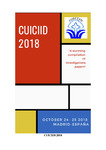
Please use this identifier to cite or link to this item:
http://ricaxcan.uaz.edu.mx/jspui/handle/20.500.11845/1121| Title: | Mexico through its government communication: from the Aztec Empire to the Ley Chayote |
| Authors: | Flores Pérez, Claudia Cecilia |
| Issue Date: | Oct-2018 |
| Publisher: | Forum XXI |
| Abstract: | Despite their vast experience displayed through the history in the field of government communication, today persist in Mexico serious problems on their exercise, same that lead to the lack of clear policies that allow to manage the different organs of government manage information with uniform and transparent criteria toward society, powers and other political actors, social and cultural rights, with which they interact. Since the Aztec Empire, until today, the establishment of such policies has resulted in a constant struggle from various trenches, counting in the best of cases, with a weak support of the authority in turn, but in most of them, with its veto and total rejection. In this sense, the modern history tells us that from almost fifty years ago has been discussing the importance of the definition of the main lines of action information as well as the liability of the various sectors with regard to the transparency and accountability. However, to the return of many decades, the legislation on the matter remains by other poor, despite the recent enactment of the General Law of Social Communication, called by its detractors Ley Chayote (in allusion to the bribery that receive in Mexico the media and journalists colluding with the government), it has not done anything else other than to delve into the legal voids and existing social. |
| URI: | http://ricaxcan.uaz.edu.mx/jspui/handle/20.500.11845/1121 https://doi.org/10.48779/nwg8-sk32 |
| ISBN: | 978-84-09-04967-7 |
| Other Identifiers: | info:eu-repo/semantics/publishedVersion |
| Appears in Collections: | *Documentos Académicos*-- UA Docencia Superior |
Files in This Item:
| File | Description | Size | Format | |
|---|---|---|---|---|
| 4.5 Mexico through its government communication.pdf | 1,06 MB | Adobe PDF |  View/Open |
This item is licensed under a Creative Commons License
